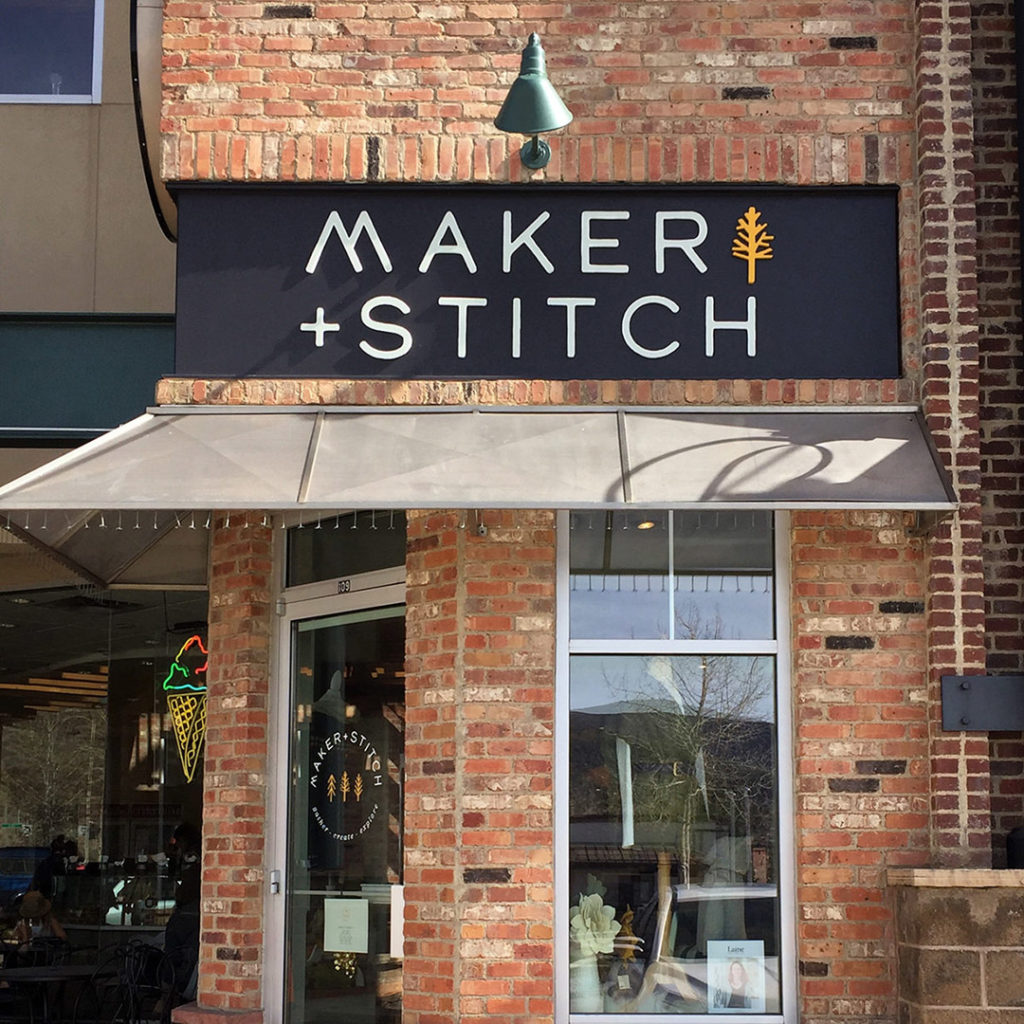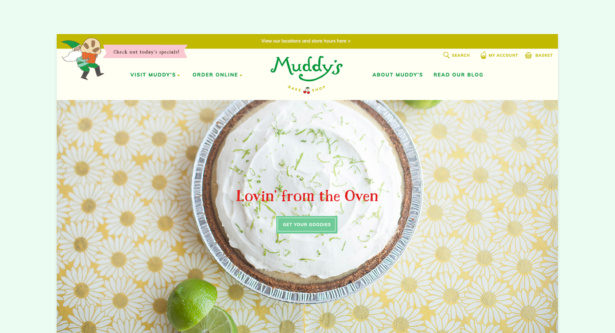How to Pivot your Brick + Mortar to Ecommerce
by Stacey Trock

2020 has brought a lot of changes. And if your business didn’t have a functioning, highly-converting ecommerce website before, chances are you’ve realized that you need to have one, now. We can’t predict how social distancing guidelines will play out in the upcoming years, but it’s clear that having an ecommerce site can drive sales to your business even when your brick-and-mortar isn’t at full capacity. Whether you’re just starting an ecommerce site or have had one, but haven’t focused on it, we’re here to help you take your brick-and-mortar shop online.
Tips for Transitioning to Ecommerce
Ecommerce not only opens up your shop to an entirely new range of customers, but it adds an additional shopping avenue for your existing customers. Many shop owners are surprised to find that once they have an easy-to-use website, their current customers happily place orders online. It’s convenience in a busy world. And of course, we don’t need to tell you that having an ecommerce site widens your customer base – whether you offer local pickup or ship across the country.

Once you’ve made the decision to increase your brick and mortar’s online presence with an ecommerce site, there are a few key actions you can take to make the website deliver results. We’ll walk you through some of the most important.
Don’t have an ecommerce site yet? It’s not too late to start. We love Shopify, and here’s why. If you’re just getting started, here’s a post from Shopify that lays out the step-by-step details of how to move your brick-and-mortar online.
How to get traffic to your ecommerce site
Once your ecommerce site is up and running, you need customers to come on by and have a look around. How do you get traffic to your website?
Search Engine Optimization (SEO) means describing your company and products in a way that search engines can understand and use to recommend your site to the right customers. Ensuring that your handmade bath salts show up in searches for ‘relaxing home spa experience’ (or other key search terms), means more visitors will click through to your site, and if you follow the steps below, will make a purchase. For an overview, you’ll want to read the beginner’s guide to SEO from Shopify and how to make SEO work for your ecommerce site. We know, can feel like a bit undertaking. That’s why you might like like our ‘quick wins’ SEO ebook, which helps you identify some changes that you can implement in the short term!
Email Marketing is something we’re always talking about and we’re not going to stop. Email is one of the highest-converting marketing channels around, and your newsletter is a list that you own (unlike your social media followers). Email is crucial for the success of your brick-and-mortar, too, but if you haven’t invested energy into email marketing, now is the time. Learn the basics of an email marketing strategy for ecommerce, where we talk in detail about why this channel is so important and walk you through what to begin implementing. One automated method that is particularly important for your ecommerce site is an abandoned cart email strategy.
Social media continues to an important way to drive traffic to your site, although you can see we’ve listed it third (and that’s on purpose!). While the returns on investment aren’t as strong as email or SEO, done well, it can be a solid referrer of shoppers. Here’s our guide to an authentic, engagement-first social media strategy. And of course, no strategy is complete with out metrics, so be sure to analyze your social media stats in Google Analytics to capitalize on what’s working.
Creating an ecommerce site that converts sales
When customers can’t touch your products, it’s imperative that you describe your products in a way that conveys the feeling of holding an item in their hands. One of the most important components of a successful ecommerce site is crafting product pages that sell, which includes: including great photography, writing captivating product descriptions, and implementing product reviews.
Telling the story of your brand has never been more important, so in addition to authentically connecting with your audience on social media, make sure your about page connects with your customers and sets your business apart from your competitors.
Take a look at your website through a what-if-this-were-my-first-time-visiting lens and carefully consider how you categorize your product offerings. This is particularly important if you sell custom or personalized products. It’s imperative that a shopper be able to find what they’re looking for, discover items they may like (but perhaps weren’t on their list), and easily understand what it is they’re getting.
How to synch your inventory between ecommerce and your POS
Many business owners who have a brick-and-mortar want to synch their inventory between their brick-and-mortar shop and their ecommerce site. This means that when someone purchases something from your shop, that item will instantly be removed from inventory so it can’t also be purchased on the website. What once required a difficult patchwork of systems now works seamlessly with the Shopify POS system. Yay!
Managing wholesale online
Do you have a brick and mortar and also wholesale to other shops? Read our post on whether you need a wholesale website? If you do, here’s how to set up wholesale accounts on Shopify.
How to analyze your ecommerce metrics
With a brick and mortar, you likely intuitively have a feel for the metrics that make your shop successful, such as returning customers, percentage of browsers who make a purchase, and number of bodies through the door. These metrics are just as important for your ecommerce shop!
Read about the conversion rate for your shop (which is actually a collection of different metrics), and 4 other crucial metrics that matter for ecommerce. Once you calculate your numbers, you can work on improving your conversion rate and the other metrics. You can’t improve what you aren’t monitoring.
Case Studies: Brick-and-Mortar to Ecommerce
Many businesses have increased their sales by adding ecommerce functionality to their website. We think that having an easy-to-use ecommerce site creates a virtuous circle: customers can easily shop and buy online, which means they return more often and recommend the site to their friends (and of course, that big recommend-er ‘google’ sends traffic your way as well!), which results in increased profits that you can use to grow your business and offer even more amazing options to your customers!
Think your products won’t be successful in an online format? Think again. GRDN is a garden shop in Brooklyn, a calm oasis for nature lovers in the city. It’s a feel that can be difficult to convey digitally, but they’ve mastered it. GRDN’s new ecommerce site helped the shop continue to thrive, even when its brick and mortar was closed in Spring 2020. Since the shop’s brick and mortar is such a fabulous place to be, you may have thought that their audience wouldn’t move online. However, the secret is creating an easy-to-navigate experience, coupled with a beautiful design and copy that tells the brand’s story on the screen. Read the full case study about GRDN’s website launch, here.

Muddy’s Bake Shop is a homestyle bakery with two retail locations in Memphis. It’s a shop that’s well-known for their sweets and for being deeply committed to their local community. In addition to making delicious treats from scratch, daily, Muddy’s also has a studio where they create custom art and wedding cakes. Although they previously had a limited mail-order business, the system was difficult to update for staff and inconsistent for customers.

By creating a custom Shopify site, their new ecommerce website makes customization and ordering a breeze. Customers can choose their preferred icing and inscription colors from a drop-down navigation and select a pickup date and time for pre-orders. And the design and copy makes online visitors feel just as welcomed as the visitors to Muddy’s in-person locations. Read the full case study about Muddy’s Bake Shop’s custom ecommerce site, here.
Are you ready to make the move?
If your product can be photographed and described with words, then your business would likely benefit from having an ecommerce site! (Is that everyone? Probably.) Even if you don’t ship, Shopify allows you to offer curbside pickup or local delivery to your customers.
If you’d like to chat about what an ecommerce solution would look like for your business, do reach out!
Browse Posts
Newsletter Sign Up
We write a new email each week to help you grow your business.
Related Posts
Let's take your online shop to the next level
The Shopify websites we design have a reputation for substantial improvements to ecommerce conversion rates and online sales. Let's talk!
 Grab my guide to the 10 main ways to grow traffic and optimize to boost sales.
Grab my guide to the 10 main ways to grow traffic and optimize to boost sales.


